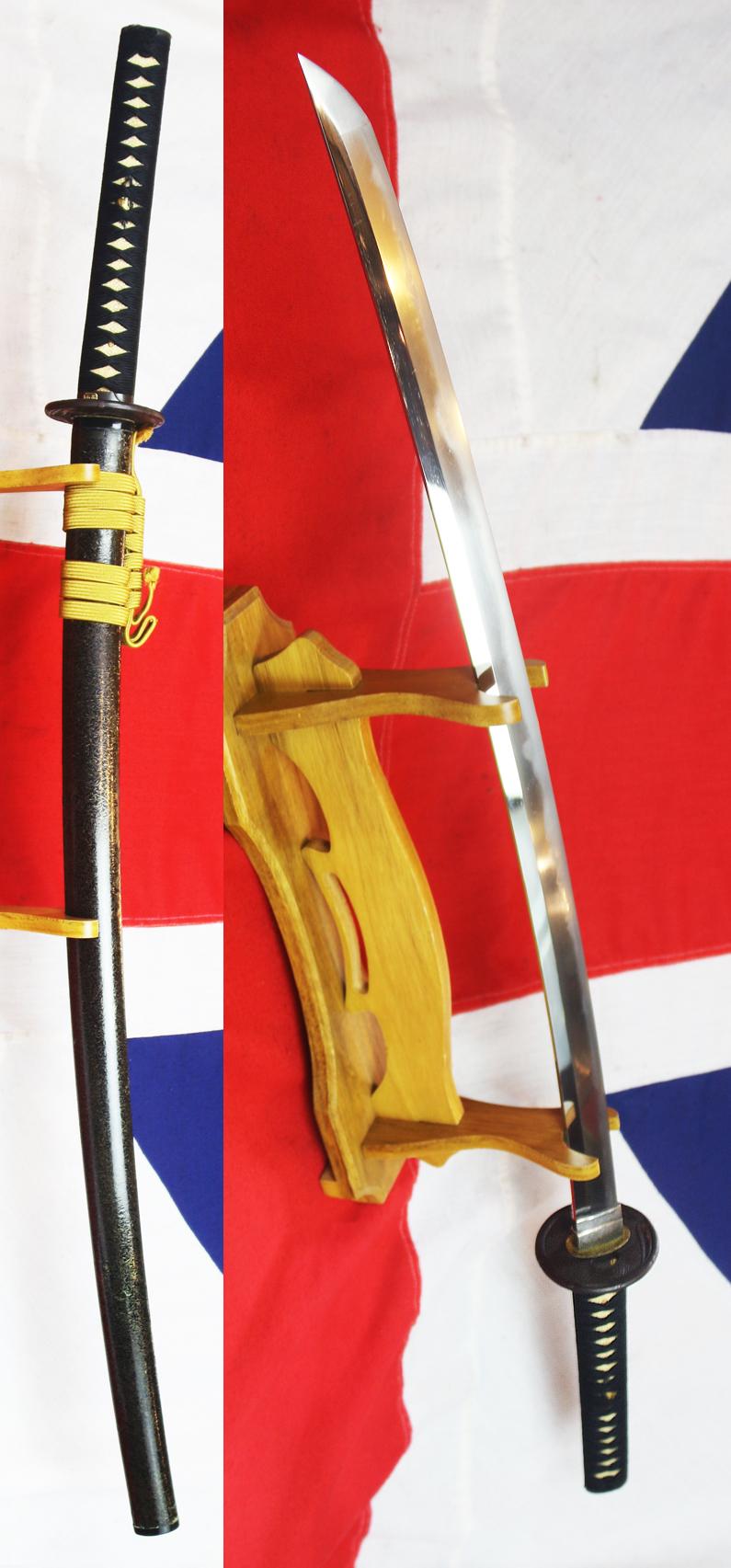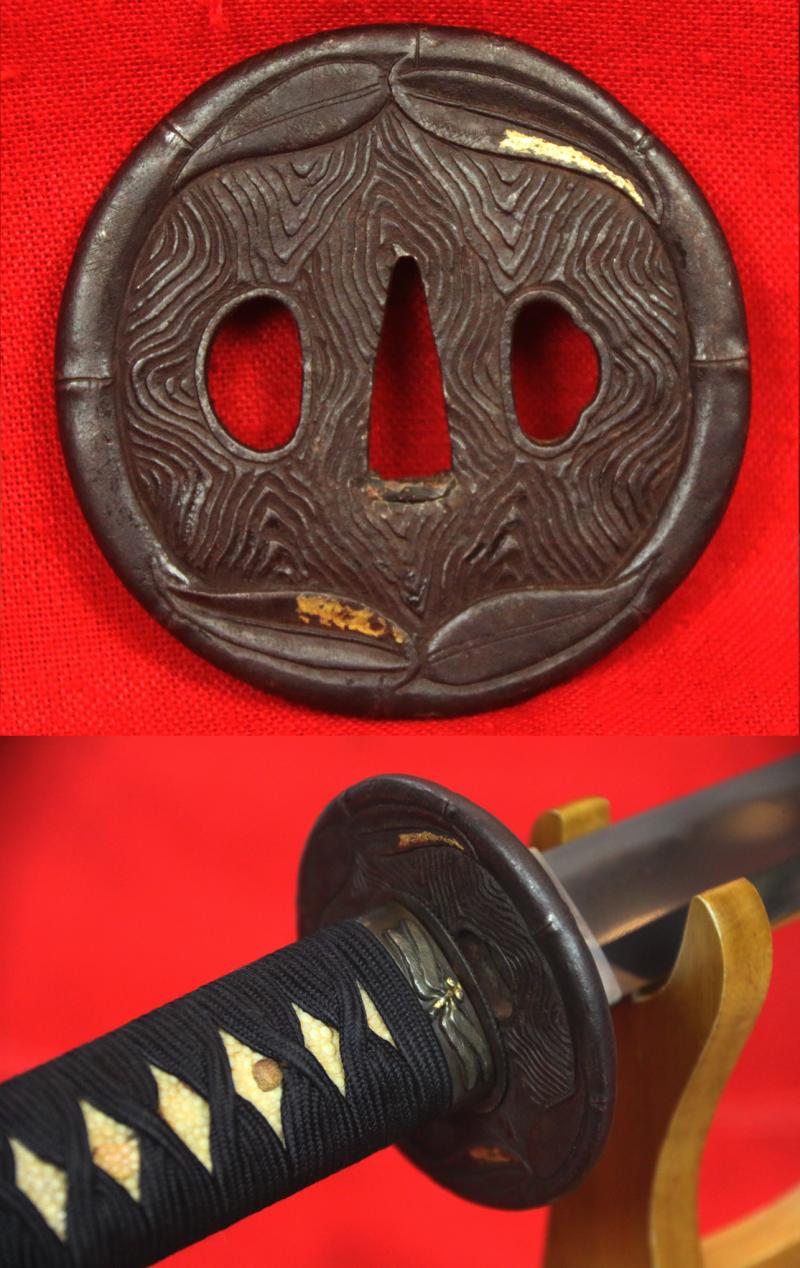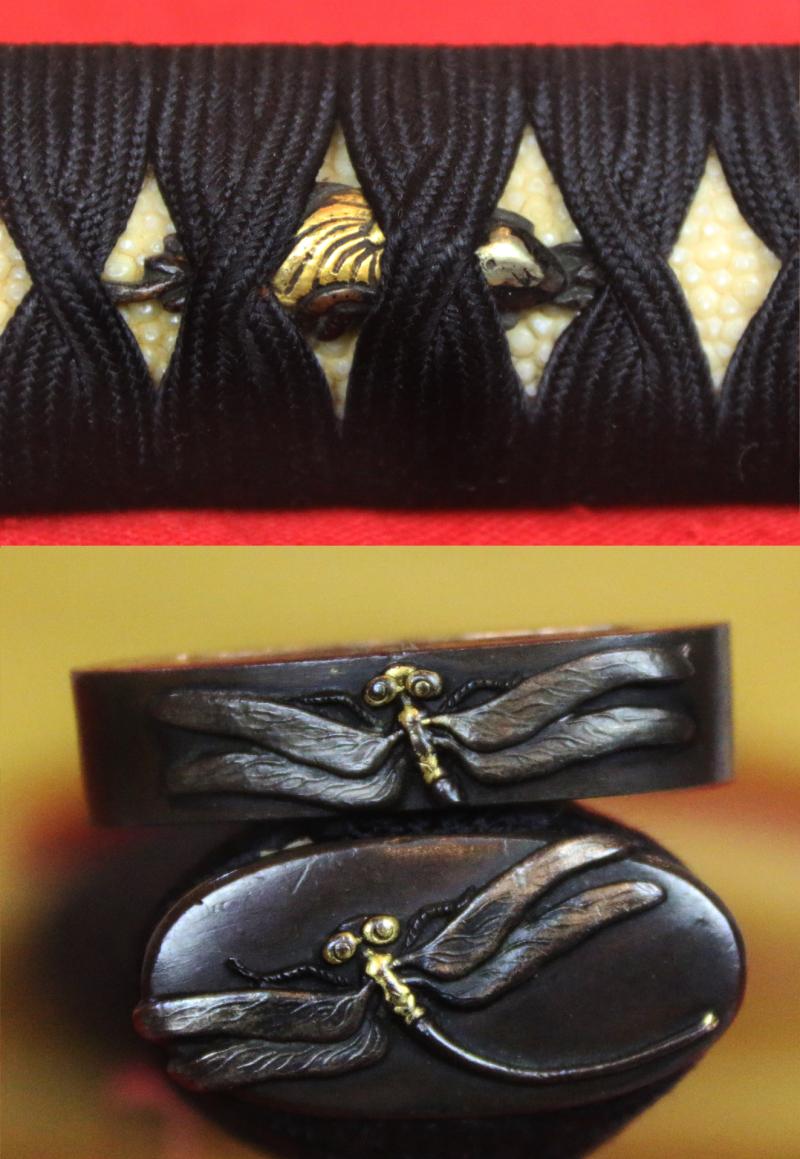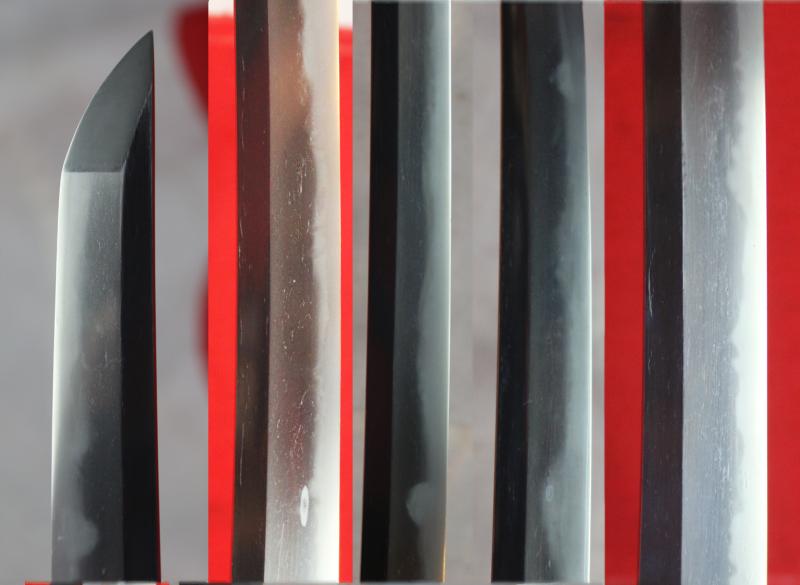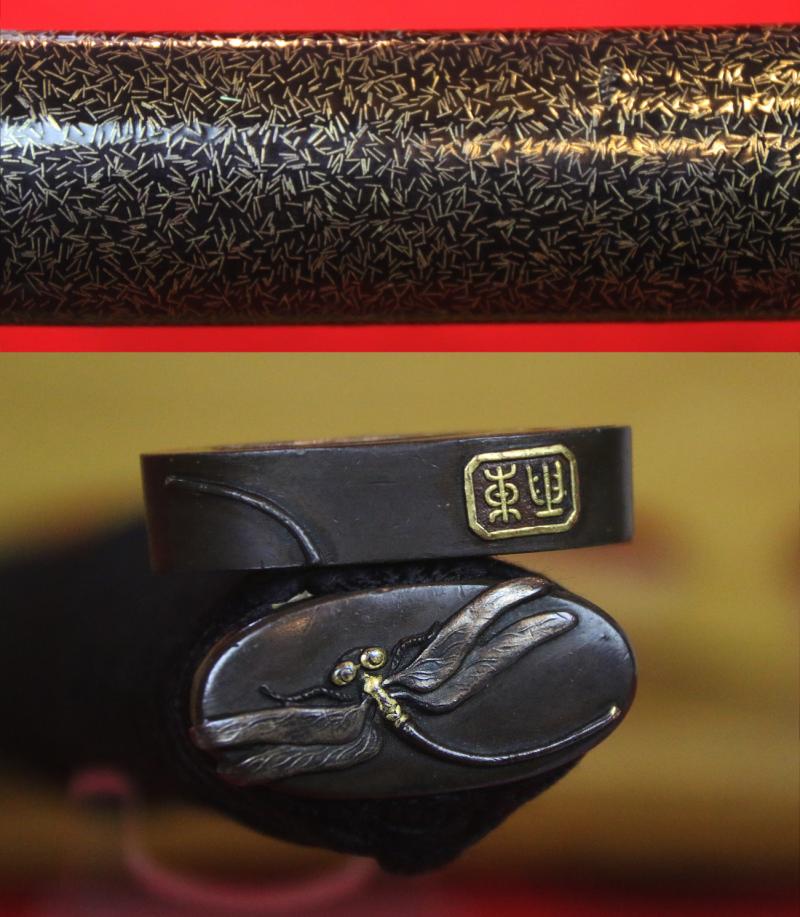Koto Period Samurai Katana, Circa 1550 From The Muramachi Era, A Most Fine Blade with Midare and Large Waves Hamon, & Nioi & Nie Deki, a Masame & Itame Hada, in Very Good Polish, Shibuishi Dragon Fly Fuchi Kashira
Fine Edo saya in superb condition decorated under clear urushi lacquer with pine needles and entwined silver wire. Very good Edo tsuba of iron {tettsu} with mokume wood grain body and a bamboo mimi {rim} with bamboo leaves. Wonderful quality shibuishi fuchi -kashira of takebori dragonflies with a gold seal. Just returned from a interior decorators display in Grosvenor Sq. London.
Nie (沸) literally means "seethe" or "boil." In Japanese sword connoisseurship, it is the name of larger martensite crystals that appear on the polished surface of some traditionally made Japanese swords, which sometimes look like bubbles of boiling water rising to the surface. Nie mostly forms along the temperline, but on some swords is also seen on the blade's surfaces. Nie & nioi
When the crystals are so small that the naked eye cannot make them out individually, and they appear like a whitish mist, it is called nioi (匂), literally "fragrance". Nioi is present to some extent on all blades, but when no or very little nie is present, we speak of nioi-deki (匂出来). When the work shows nie throughout, we call it nie deki (沸出来) where deki means workmanship or interpretation.
Japan was once known as the “Land of the Dragonfly”, as the Emperor Jimmu is said to have once climbed a mountain in Nara, and looking out over the land, claimed that his country was shaped like two Akitsu, the ancient name for the winged insects, mating.
Dragonflies appeared in great numbers in 1274 and again in 1281, when Kublai Khan sent his Mongol forces to conquer Japan. Both times the samurai repelled the attackers, with the aid of huge typhoons, later titled Kamikaze (the Divine Winds), that welled up, destroying the Mongol ships, saving Japan from invasion. For that reason, dragonflies were seen as bringers of divine victory.
Dragonflies never retreat, they will stop, but will always advance, which was seen as an ideal of the samurai. Further, although the modern Japanese word for dragonfly is Tombo, the old (Pre Meiji era) word for dragonfly was Katchimushi. “Katchi” means “To win”, hence dragonflies were seen as auspicious by the samurai.
Insects in general have been celebrated in Japanese culture for centuries. The Lady Who Loved Insects is a classic story of a caterpillar-collecting lady of the 12th century court; the Tamamushi, or Jewel Beetle Shrine, is a seventh century miniature temple, once shingled with 9,000 iridescent beetle forewings. In old Japanese literature, poems upon insects are to be found by thousands, Daisaburo Okumoto is director of the Fabre Insect Museum. An avid insect collector and a scholar of French literature, he has translated many of Fabre's works. He ascribes the popularity of insects in Japan to national character. It seems like Japanese eyes are like macro lenses and Western eyes are wide-angle, he says. A garden in Versailles, it's very wide and symmetrical. But Japanese gardens are continuous from the room and also very small. We feel calm when we look at small things. The medieval Japanese monk Yoshida Kenko put it this way: “If man were never to fade away like the dews of Adashino, never to vanish like the smoke over Toribeyama, how things would lose their power to move us!
Japanese lacquer, or urushi, is a transformative and highly prized material that has been refined for over 7000 years.
Cherished for its infinite versatility, urushi is a distinctive art form that has spread across all facets of Japanese culture from the tea ceremony to the saya scabbards of samurai swords
Japanese artists created their own style and perfected the art of decorated lacquerware during the 8th century. Japanese lacquer skills reached its peak as early as the twelfth century, at the end of the Heian period (794-1185). This skill was passed on from father to son and from master to apprentice.
Some provinces of Japan were famous for their contribution to this art: the province of Edo (later Tokyo), for example, produced the most beautiful lacquered pieces from the 17th to the 18th centuries. Lords and shoguns privately employed lacquerers to produce ceremonial and decorative objects for their homes and palaces.
The varnish used in Japanese lacquer is made from the sap of the urushi tree, also known as the lacquer tree or the Japanese varnish tree (Rhus vernacifera), which mainly grows in Japan and China, as well as Southeast Asia. Japanese lacquer, 漆 urushi, is made from the sap of the lacquer tree. The tree must be tapped carefully, as in its raw form the liquid is poisonous to the touch, and even breathing in the fumes can be dangerous. But people in Japan have been working with this material for many millennia, so there has been time to refine the technique!
Flowing from incisions made in the bark, the sap, or raw lacquer is a viscous greyish-white juice. The harvesting of the resin can only be done in very small quantities.
Three to five years after being harvested, the resin is treated to make an extremely resistant, honey-textured lacquer. After filtering, homogenization and dehydration, the sap becomes transparent and can be tinted in black, red, yellow, green or brown.
Once applied on an object, lacquer is dried under very precise conditions: a temperature between 25 and 30°C and a humidity level between 75 and 80%. Its harvesting and highly technical processing make urushi an expensive raw material applied in exceptionally fine successive layers, on objects such as bowls or boxes.After heating and filtering, urushi can be applied directly to a solid, usually wooden, base. Pure urushi dries into a transparent film, while the more familiar black and red colours are created by adding minerals to the material. Each layer is left to dry and polished before the next layer is added. This process can be very time-consuming and labour-intensive, which contributes to the desirability, and high costs, of traditionally made lacquer goods. The skills and techniques of Japanese lacquer have been passed down through the generations for many centuries. For four hundred years, the master artisans of Zohiko’s Kyoto workshop have provided refined lacquer articles for the imperial household
Code: 25334
7995.00 GBP


